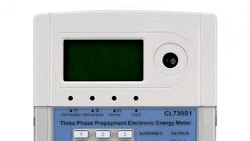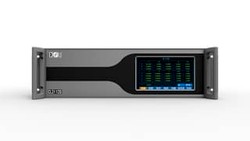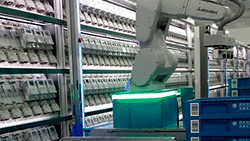Natural disasters strike, cyber threats loom, and critical infrastructure faces potential disruptions. In the face of these challenges, utilities worldwide have their eyes set on one thing: grid resilience. But what exactly does it mean?
Well, it's quite simple, really. Grid resilience refers to the ability of an electric power system to prepare for, withstand, and bounce back from disruptive events. It's like having a superpower that helps the grid stay strong and recover quickly.
So, what makes a grid resilient? There are a few key characteristics to look out for. First, a resilient grid incorporates redundancies and alternative supply routes. It's like having multiple backup plans in case something goes wrong. Additionally, it's designed to isolate and restore service after local failures. Think of it as a superhero that can fix itself when parts of it break down.
But that's not all! Grid resilience also utilizes microgrids and distributed energy resources. These fancy terms basically mean that the grid has localized backup power, which helps limit the scope of outages. It's like having little superheroes scattered around, ready to jump in and provide electricity when it's needed most.
Now, let's talk about how utilities make the grid resilient. They employ various strategies, like grid hardening with stronger poles and wires. This makes the grid more resistant to disruptions. They also use remote fault detection to quickly identify and address issues, preventing long-term performance loss. And let's not forget about protecting the grid from the forces of nature! Utilities manage vegetation and use animal deterrents to safeguard the grid against weather events.
But it's not just physical threats that utilities have to worry about. They also face cyber-attacks. To combat this, they deploy cyber defenses like multi-factor authentication and network segmentation. It's like having an army of tech-savvy superheroes protecting the grid from the villains of the digital world.
Now, how do we measure grid resilience? Utilities look at things like restoration speeds, customer-hours of interruption, and metrics called SAIDI and SAIFI. These give them a sense of how quickly they can recover from disruptions and provide reliable electricity to their communities. They also use modelling to simulate outage scenarios and gauge their preparedness. It's like running simulations to make sure they're ready for anything that comes their way.
SAIDI stands for System Average Interruption Duration Index, while SAIFI stands for System Average Interruption Frequency Index. These metrics are commonly used in the utility industry to measure the reliability and performance of the power grid.
SAIDI measures the average duration of interruptions experienced by customers over a specific period of time. It tells us how long, on average, customers are without power when an outage occurs. Essentially, it shows the impact of interruptions in terms of the time customers spend in the dark.
On the other hand, SAIFI measures the average number of interruptions experienced by customers over that same period of time. It tells us how frequently outages occur and how many times customers are affected. SAIFI gives us a sense of the reliability of the power grid and how often customers experience disruptions.
Both SAIDI and SAIFI are valuable metrics for utilities because they provide insights into the quality of service they are delivering to their customers. By tracking these metrics, utilities can identify areas for improvement, prioritize maintenance efforts, and make informed decisions to enhance grid reliability.
For example, if a utility has a high SAIDI value, it means that customers are experiencing longer interruptions, which could indicate a need for infrastructure upgrades or better outage management strategies. Conversely, a high SAIFI value suggests that customers are experiencing frequent interruptions, indicating potential issues with equipment reliability or system vulnerabilities.
By analysing SAIDI and SAIFI data, utilities can evaluate their performance, set targets for improvement, and compare their results with industry benchmarks. These metrics help drive continuous improvement efforts and ensure that utilities are providing reliable and resilient electricity services to the communities they serve.
Maintaining Grid Resilience with Renewables
With decentralized power generation becoming more prevalent, utilities are facing new challenges in maintaining grid resilience. The traditional model of centralized power generation, where large power plants supplied electricity to the grid, is evolving as more distributed energy resources, such as solar panels and wind turbines, are being installed at the consumer level.
While decentralized power generation brings numerous benefits, such as reduced transmission losses and increased energy efficiency, it also presents unique challenges for utilities. One of the main challenges is managing the variability and intermittency of renewable energy sources. Unlike traditional power plants that can provide consistent power output, renewable energy generation is dependent on weather conditions and can fluctuate throughout the day.
To overcome these challenges, utilities must adapt their grid infrastructure and implement advanced technologies. They need to invest in smart grid solutions that enable real-time monitoring, control, and optimization of the distributed energy resources. This allows them to balance supply and demand, integrate renewable energy sources seamlessly into the grid, and ensure a reliable and resilient power supply.
Moreover, utilities need to enhance their communication and coordination with distributed energy resource owners. This means establishing effective mechanisms for grid connection, providing incentives for renewable energy adoption, and implementing appropriate policies and regulations to support decentralized power generation.
Final Thoughts
Ultimately, the goal of grid resilience is to absorb shocks and ensure the rapid reestablishment of service. In these uncertain times, it's more important than ever. Adaptability is key, because we never know what challenges might come our way. But with a resilient grid, we can face those challenges head-on and keep the electricity flowing.
Thank you for reading!
If you found this article helpful or have any thoughts to share, please don't leave me in the dark and post a comment below. Your insights and feedback are valuable to us. Together, let's keep the conversation flowing and the lights shining bright!
Editor's note: This article was originally published in November 2023 and has been updated for comprehensiveness.





Thanks for sharing the useful information.
Nick, thank you for your comment. We're thrilled to hear that you found the information useful! If you'd like to stay up to date with our latest articles and receive valuable insights each week, we invite you to subscribe to our newsletter. It's a great way to ensure you never miss out on our exciting content.